ZEBRA TC21 Handheld Touch Computer User Guide

Copyright
ZEBRA and the stylized Zebra head are trademarks of Zebra Technologies Corporation, registered in many jurisdictions worldwide. All other trademarks are the property of their respective owners. ©2020 Zebra Technologies Corporation and/or its affiliates. All rights reserved.COPYRIGHTS & TRADEMARKS: For complete copyright and trademark information, go towww.zebra.com/copyright.WARRANTY: For complete warranty information, go to www.zebra.com/warranty.END USER LICENSE AGREEMENT: For complete EULA information, go to www.zebra.com/eula.
Terms of Use
- Proprietary StatementThis manual contains proprietary information of Zebra Technologies Corporation and its subsidiaries (“Zebra Technologies”). It is intended solely for the information and use of parties operating and maintaining the equipment described herein. Such proprietary information may not be used, reproduced, or disclosed to any other parties for any other purpose without the express, written permission of Zebra Technologies.
- Product ImprovementsContinuous improvement of products is a policy of Zebra Technologies. All specifications and designs are subject to change without notice.
- Liability DisclaimerZebra Technologies takes steps to ensure that its published Engineering specifications and manuals are correct; however, errors do occur. Zebra Technologies reserves the right to correct any such errors and disclaims liability resulting therefrom.
- Limitation of LiabilityIn no event shall Zebra Technologies or anyone else involved in the creation, production, or delivery of the accompanying product (including hardware and software) be liable for any damages whatsoever (including, without limitation, consequential damages including loss of business profits, business interruption, or loss of business information) arising out of the use of, the results of use of, or inability to use such product, even if Zebra Technologies has been advised of the possibility of such damages. Some jurisdictions do not allow the exclusion or limitation of incidental or consequential damages, so the above limitation or exclusion may not apply to you.
Unpacking
- Carefully remove all protective material from the device and save the shipping container for later storage and shipping.
- Verify that the following were received:• Touch computer• PowerPrecision Lithium-ion battery• Regulatory Guide.
- Inspect the equipment for damage. If any equipment is missing or damaged, contact the Global Customer Support center immediately.
- Prior to using the device for the first time, remove the protective shipping film that covers the scan window, display and camera window.
Features
Figure 1 Front View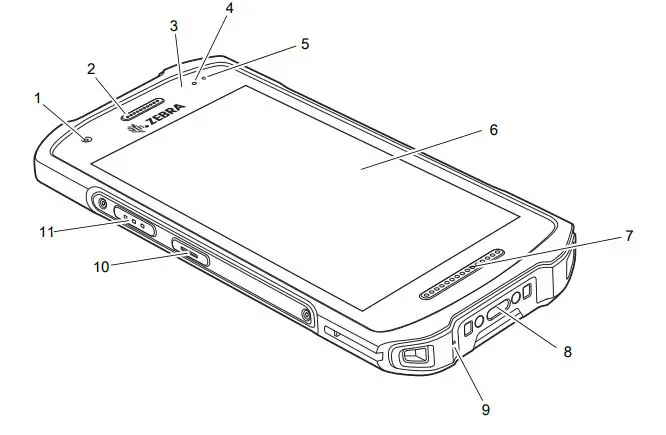
Table 1 Front View Features

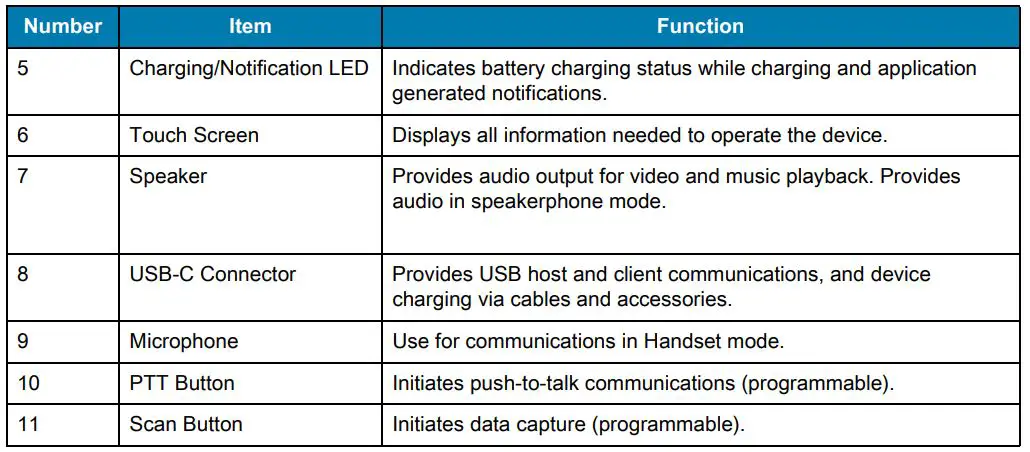
Figure 2 Rear View
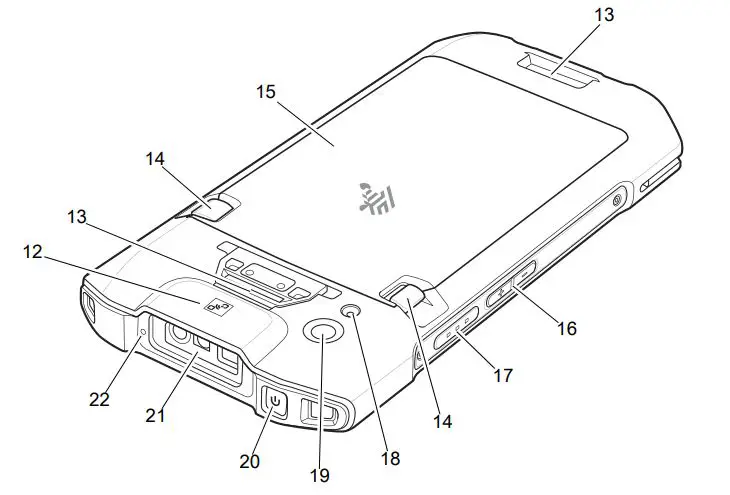
Table 2 Back View Features

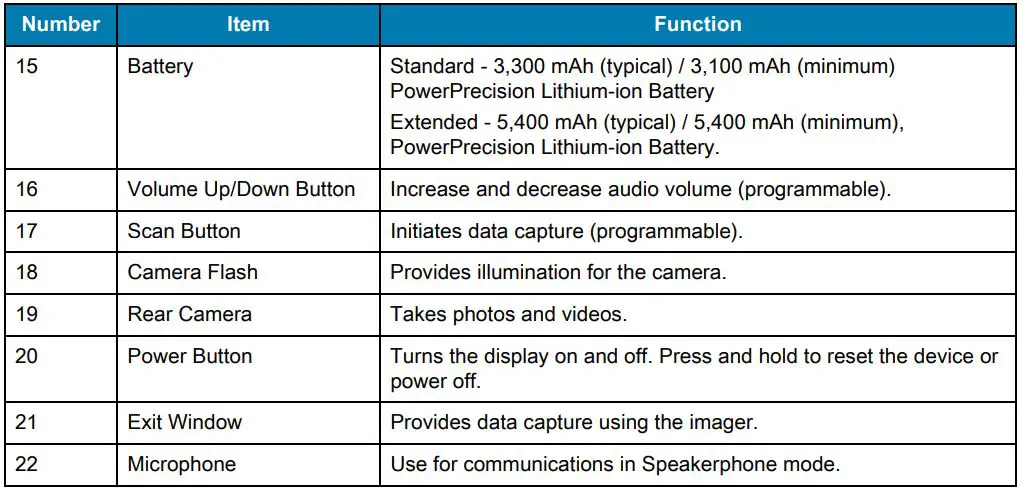
Setting Up the Device
To start using the device for the first time.
- Install a micro secure digital (SD) card (optional).
- Install hand strap (optional).
- Install the battery.
- Charge the device.
- Power on the device.
Installing a microSD Card
The microSD card slot provides secondary non-volatile storage. The slot is located under the battery pack. Refer to the documentation provided with the card for more information, and follow the manufacturer’s recommendations for use.
![]() CAUTION: Follow proper electrostatic discharge (ESD) precautions to avoid damaging the microSD card. Proper ESD precautions include, but are not limited to, working on an ESD mat and ensuring that the operator is properly grounded.
CAUTION: Follow proper electrostatic discharge (ESD) precautions to avoid damaging the microSD card. Proper ESD precautions include, but are not limited to, working on an ESD mat and ensuring that the operator is properly grounded.
1. Lift the access door.
Figure 3 Lift Access Door


2. Slide the microSD card holder to the unlock position.Figure 4 Unlock microSD Card Holder
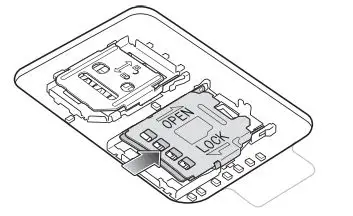

3. Lift the microSD card holder.Figure 5 Lift the microSD Card Holder
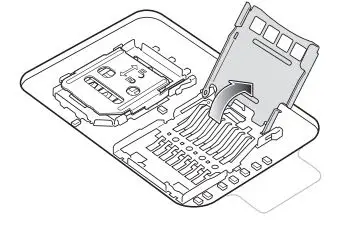

![]()
![]()
![]()
![]()
![]()
6. Re-install the access door.Figure 8 Replace Access Door
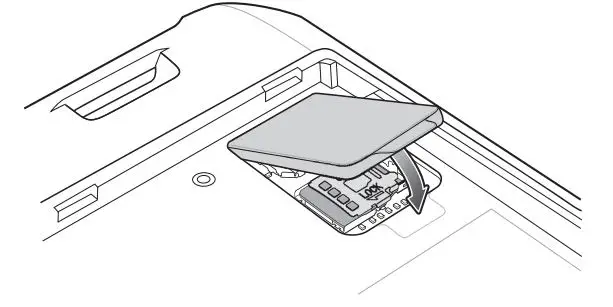

Installing the Battery
![]()
![]()
![]()
![]()
1. Insert the battery, bottom first, into the battery compartment in the back of the device.Figure 9 Insert Bottom of Battery into Battery Compartment
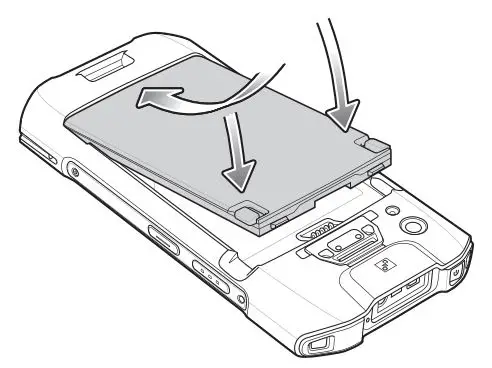

2. Press the battery down into the battery compartment until the battery release latches snap into place.
Charging the Device
![]()
![]()
![]()
![]()
![]()
Table 3 Accessories
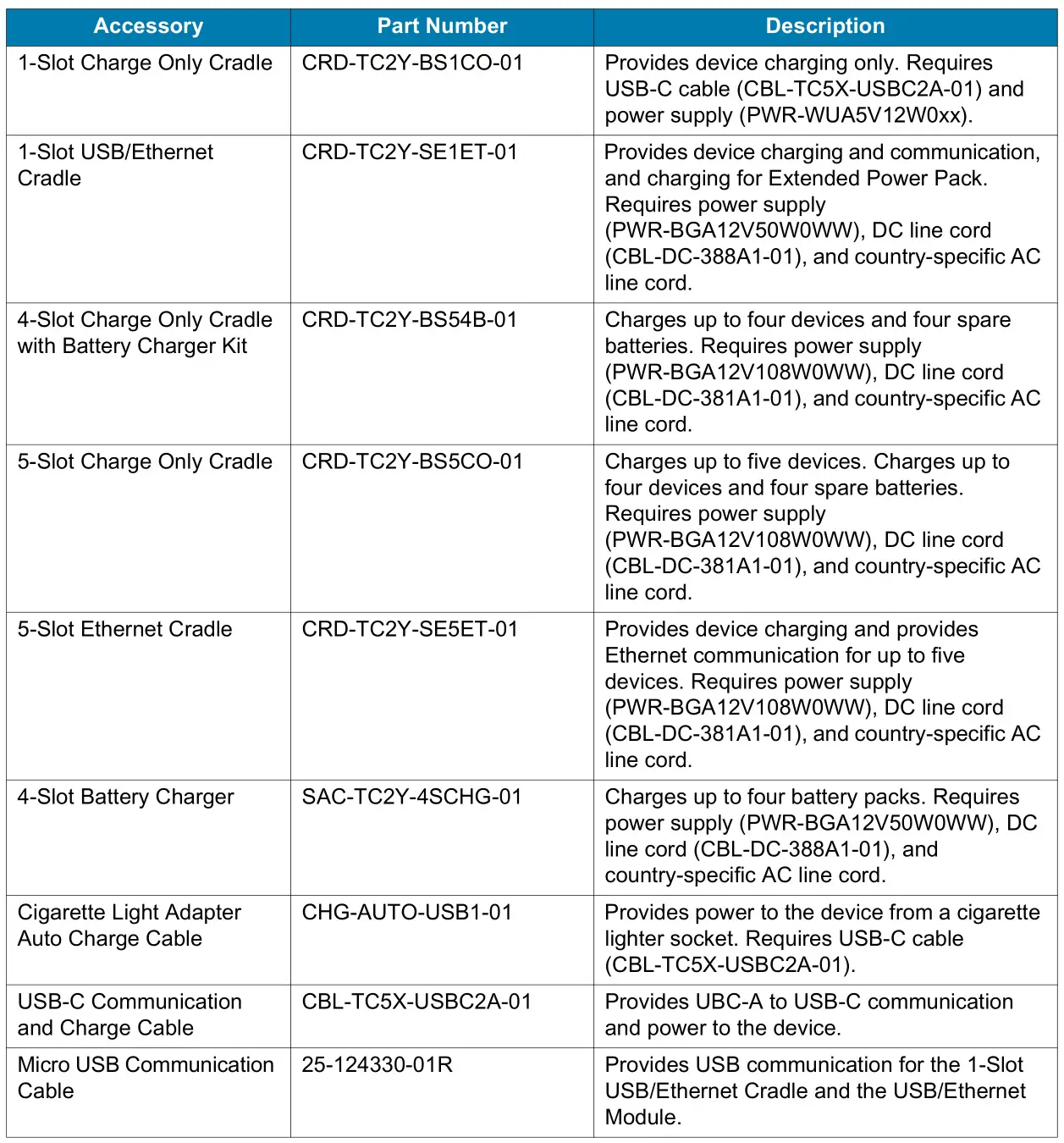

Main Battery Charging
To charge a device:
1. Insert the device into a slot to begin charging.2. Ensure the device is seated properly.
The device’s Charging/Notification LED indicates the status of the battery charging in the device. The 3,220 mAh (typical) standard battery charges from fully depleted to 90% in approximately 2.5 hours and from fully depleted to 100% in approximately three hours. The 5,260 mAh (typical) extended battery charges from fully depleted to 90% in approximately four hours and from fully depleted to 100% in approximately five hours.
![]()
![]()
![]()
![]()
To achieve the best fast charging results use only Zebra charging accessories and batteries. Charge batteries at room temperature with the device in sleep mode.
Table 4 Charging/Notification LED Charging Indicators
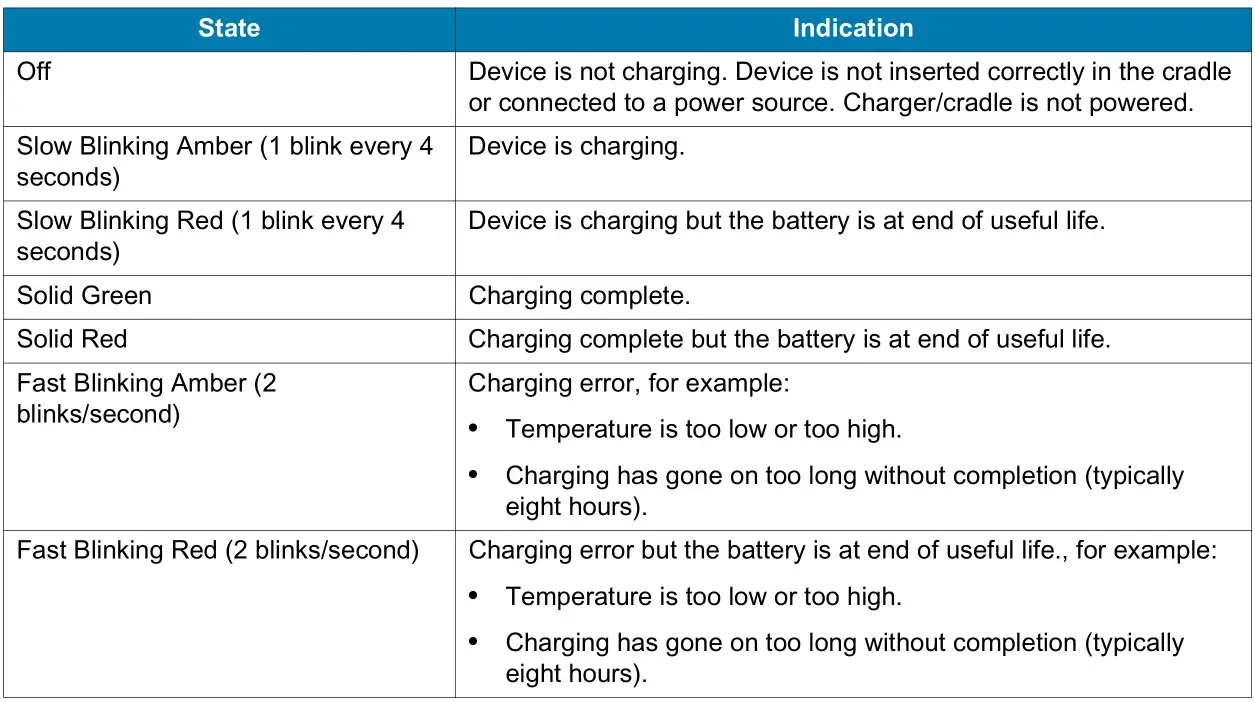

Spare Battery Charging
To charge a spare battery:
1. Insert the battery into a battery charging well.2. Gently press down on the battery to ensure proper contact.
The Spare Battery Charging LED on the cup indicates the status of the spare battery charging. The 3,220 mAh (typical) standard battery charges from fully depleted to 90% in approximately 2.5 hours and from fully depleted to 100% in approximately three hours. The 5,260 mAh (typical) extended battery charges from fully depleted to 90% in approximately four hours and from fully depleted to 100% in approximately five hours.
![]()
![]()
![]()
![]()
To achieve the best fast charging results use only Zebra charging accessories and batteries.
Table 5 Spare Battery LED Charging Indicators


Charging Temperature
Charge batteries in temperatures from 0°C to 40°C (32°F to 104°F). The device or cradle always performs battery charging in a safe and intelligent manner. At higher temperatures (for example: approximately +37°C (+98°F)) the device or cradle may for small periods of time alternately enable and disable battery charging to keep the battery at acceptable temperatures. The device and cradle indicates when charging is disabled due to abnormal temperatures via its LED.
1-Slot Charge Only Cradle
Figure 10 1–Slot Charge Only Cradle


Table 6 1-Slot Charge Only Cradle Features


1-Slot USB/Ethernet Cradle
Figure 11 1–Slot USB/Ethernet Cradle Setup
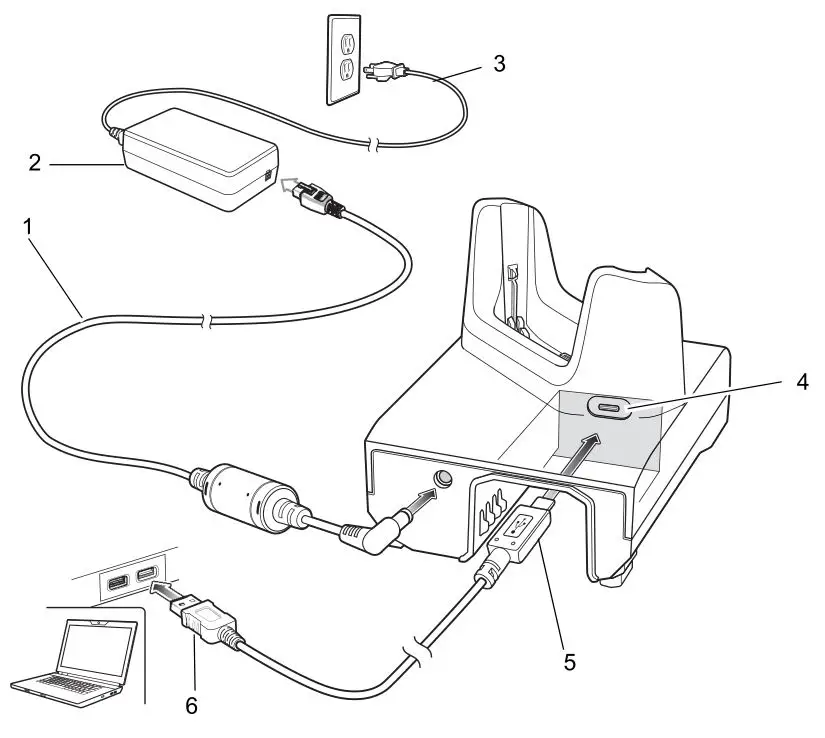

Table 7 1-Slot USB/Ethernet Cradle Features


4-Slot Charge Only Cradle with Battery Charger
Figure 12 4-Slot Charge Only Cradle with Battery Charger
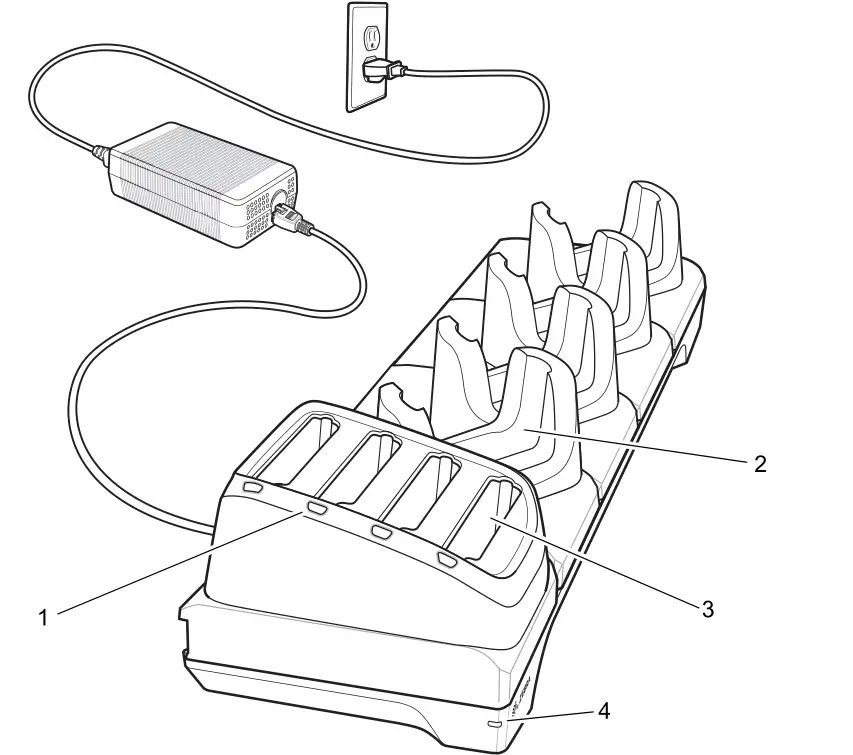

Table 8 4-Slot Charge Only Cradle with Battery Charger Features


5-Slot Charge Only Cradle
Figure 13 5-Slot Charge Only Cradle
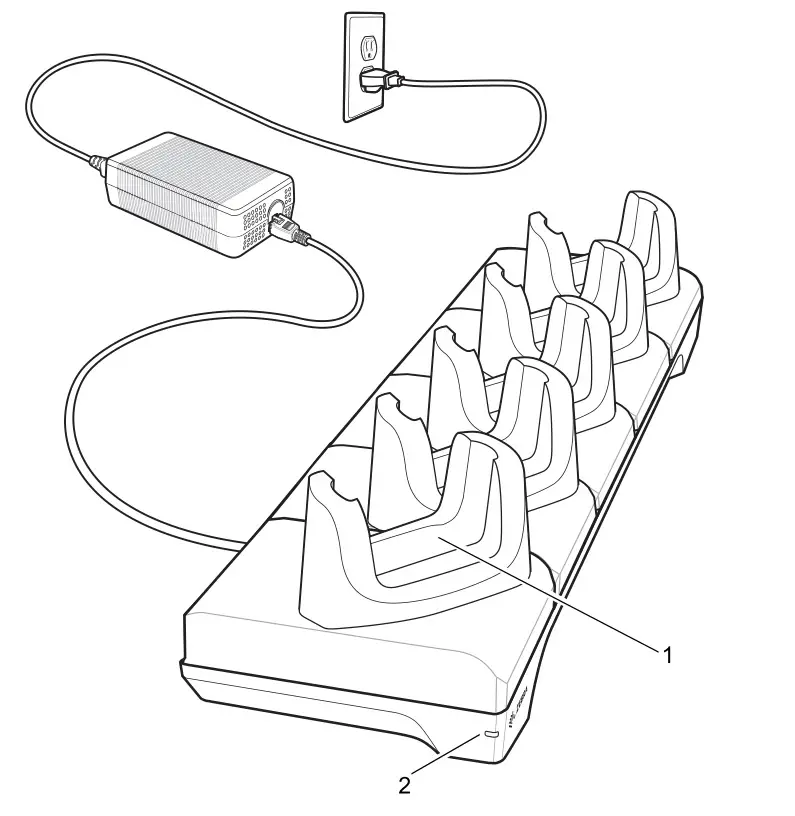

Table 9 5-Slot Charge Only Cradle Features


5-Slot Ethernet Cradle
Figure 14 5-Slot Ethernet Cradle


Table 10 5-Slot Ethernet Cradle Features


4-Slot Battery Charger
Figure 15 4-Slot Battery Charger
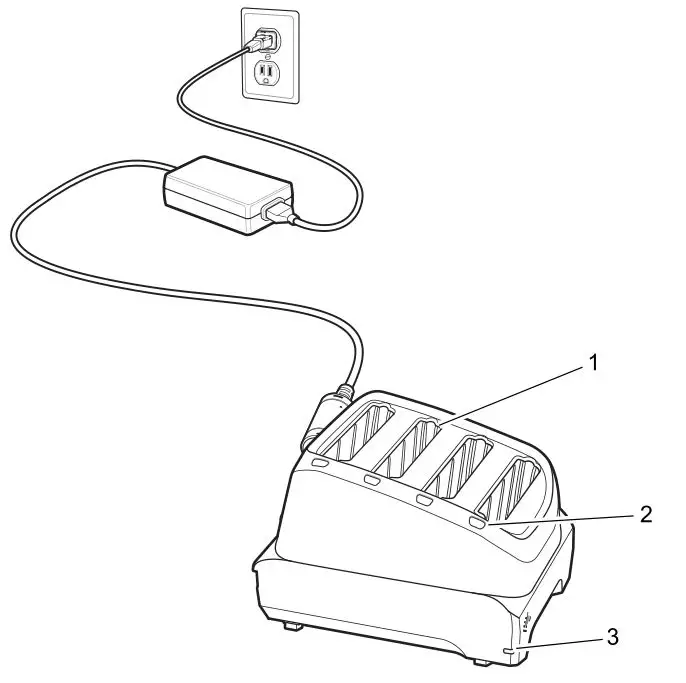

Table 11 4-Slot Battery Charger Features


USB cable
The USB cable plugs into the bottom of the device. When attached to the device the cable allows charging, transferring data to a host computer, and connecting USB peripherals.
Figure 16 USB cable
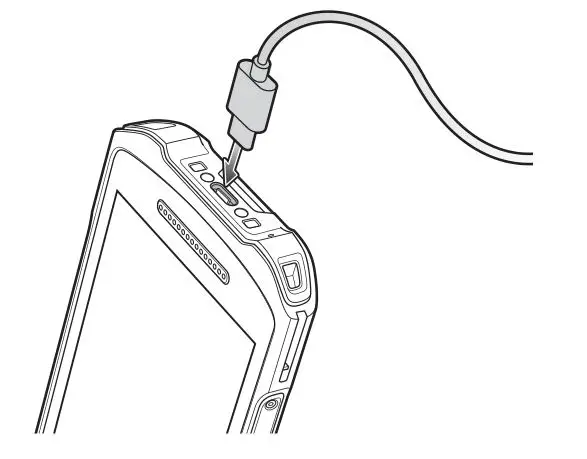

Scanning with Internal Imager
To read a barcode, a scan-enabled app is required. The device contains the DataWedge app that allows the user to enable the imager, decode the barcode data, and display the barcode content.
To scan with the internal imager:
1. Ensure that an app is open on the device and a text field is in focus (text cursor in text field).2. Point the exit window on the top of the device at a barcode.
Figure 17 Imager Scanning


3. Press and hold the scan button.The red laser aiming pattern turns on to assist in aiming.
![]()
![]()
![]()
4. Ensure the barcode is within the area formed by the crosshairs in the aiming pattern. The aiming dot increases visibility in bright lighting conditions.
Figure 18 Aiming Pattern
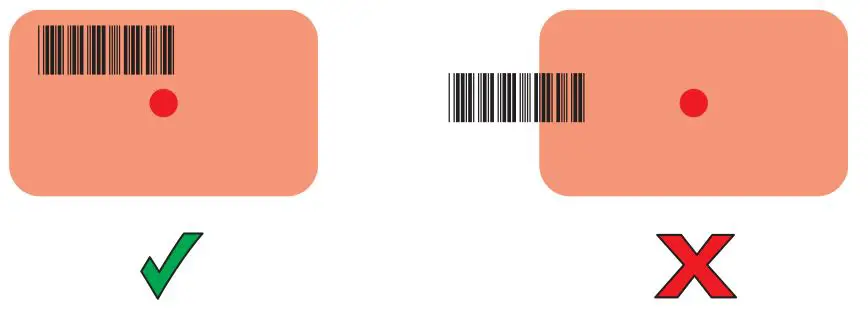

Figure 19 Pick List Mode with Multiple Barcodes
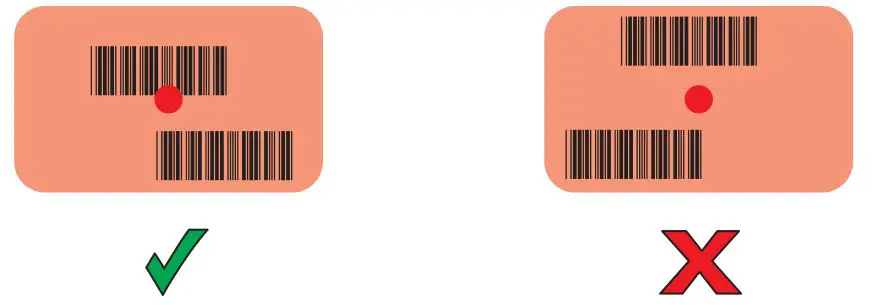

5. The Data Capture LED lights green and a beep sounds, by default, to indicate the barcode was decoded successfully.6. Release the scan button.
![]()
![]()
![]()
7. The barcode content data displays in the text field.
Ergonomic Considerations
![]()
![]()
![]()
![]()
![]()
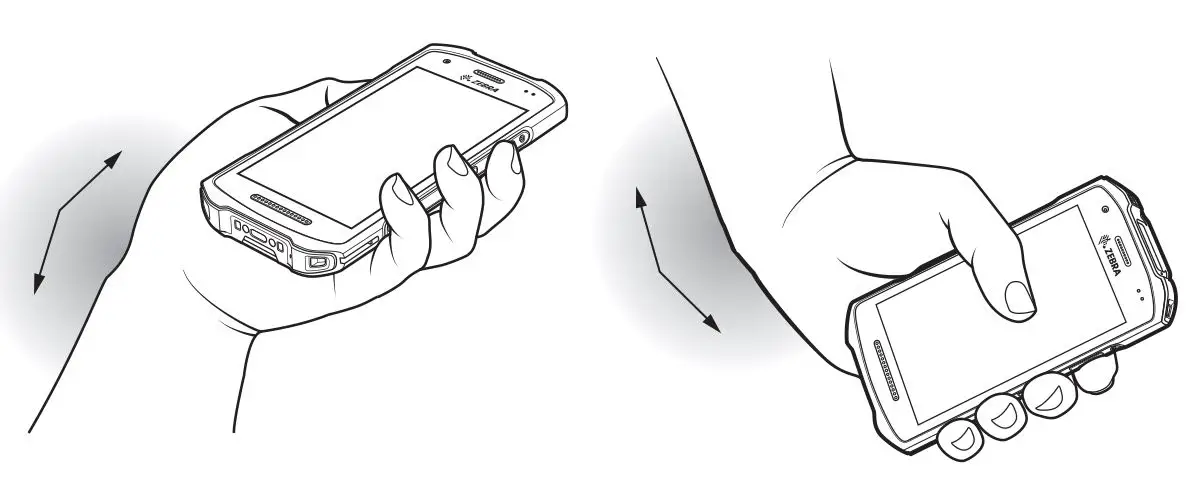



References
[xyz-ips snippet=”download-snippet”]


